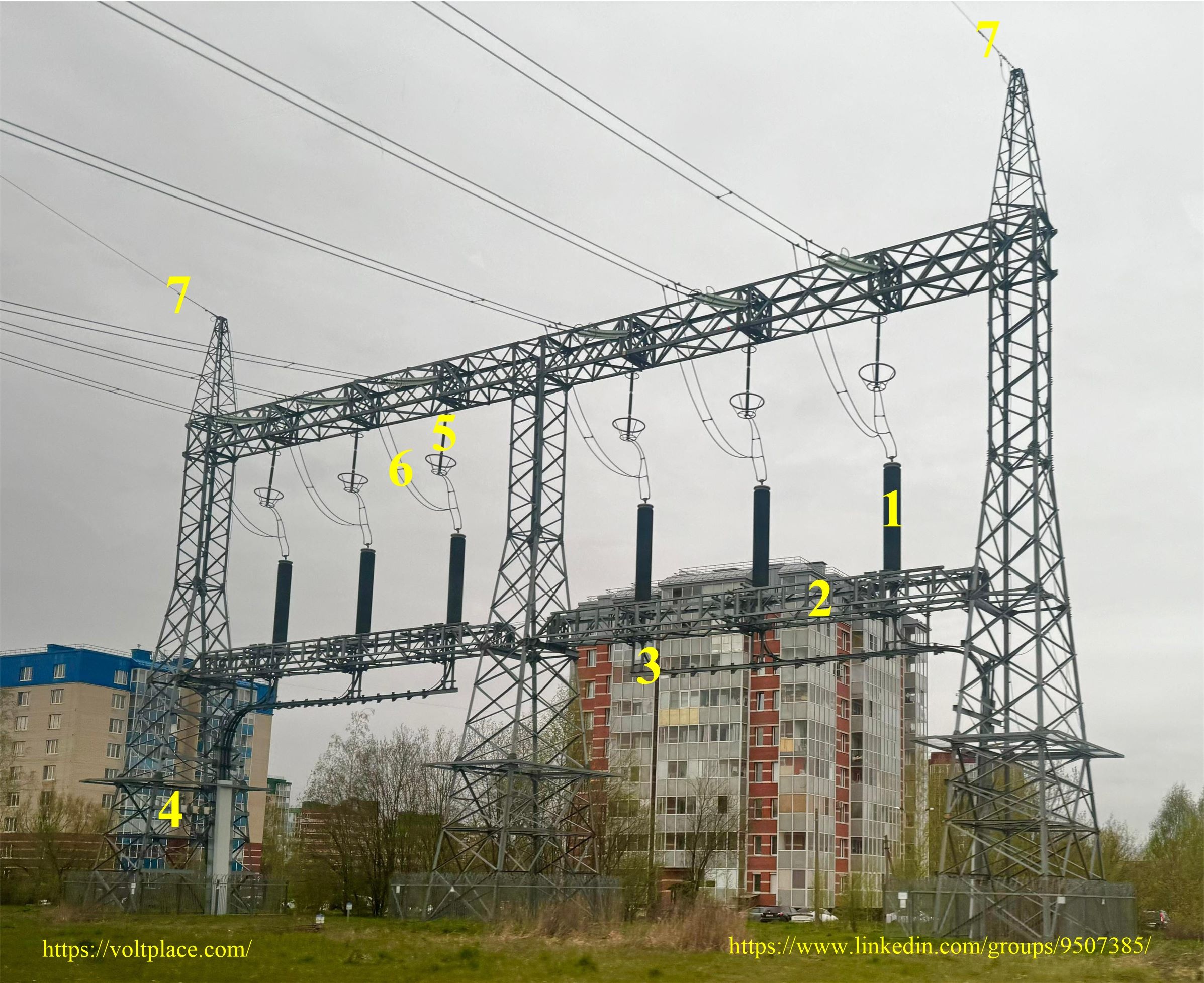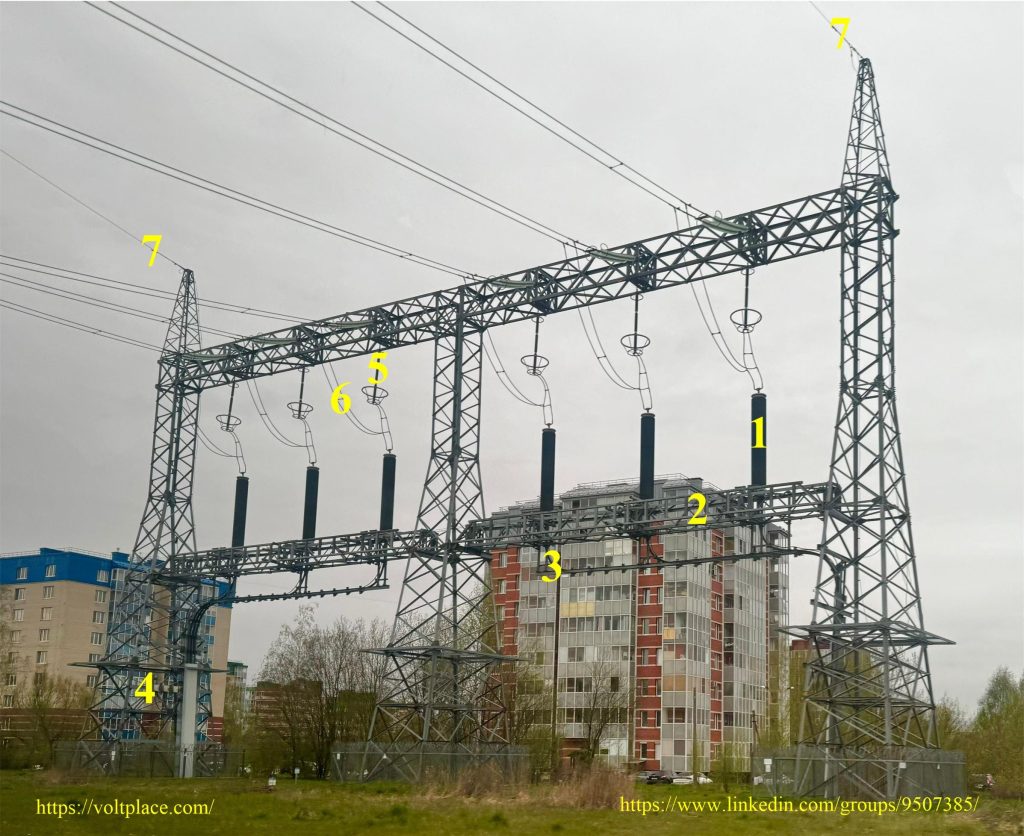
Transition tower is always a reason to talk
Sometimes I envy overhead line (OHL) specialists because it’s always easy for them to show what they are doing. They walk down the street with family and friends and say – look, there is a tower (pylon, pole), there are wires hanging, and shield wires above them, and birds that have built nests. But what should cable specialists do? Most of the cable industry is located somewhere underground and hidden from our eyes, and the question is – what can they show?
After reading the previous paragraph, it will become clear why cable specialists always look closely at the transition towers between overhead and cable lines. It is in these places that the cable line comes out of the ground, and we can see it and we can talk. So, let’s discuss one of these transition towers – it is shown in the photo, and the points that we will discuss are indicated by numbers (1-7).

1. The cable teminations are located at a height above the ground, which makes them difficult to maintain. If the portal is so wide and with horizontal traverses (crossarms), then there is a lot of space under it, and it would be quite possible and convenient to place the terminations directly on the ground.
2. If the terminations are placed at a height, then the horizontal traverse could be used for inspection of the terminations or their maintenance. But for some reason, the traverse does not have a deck for the movement of personnel. Also, the staff is not protected from falling down in any way.
3. The bends of the cables seem unnecessarily sharp, with an unacceptably small turning radius.
4. The link boxes for connecting (bonding, grounding) the cable screens are located at a height of about 2.5 meters, which is too high for the staff and requires the use of a ladder. It remains unclear why the link boxes were placed at such a height if the tower body is still fenced with a high fence and excludes the penetration of unauthorized persons.
5. Suspension of surge arresters (SA) is a bad solution. Firstly, this reduces the efficiency of their work, because the path for current through the SA into the ground turns out to be very long, including a horizontal traverse and vertical tower body. Secondly, in case of SA fault, the radius of expansion of fragments of its structure will be greater, affecting several terminations located under it at once, as well as members of society.
6. It is better to attach the lead wire first to the SA, and only then to the equipment being protected (termination). Firstly, it will slightly improve the protection from overvoltages. Secondly, it will remove the impact from the long lead (trembling on the wind) on the termination body.
7. Two shield wires are located too far from each other, which creates a threat of lightning breaking into the middle phases.
Transition tower is always an occasion for cable specialists to talk.
